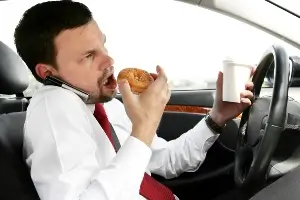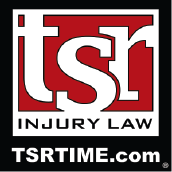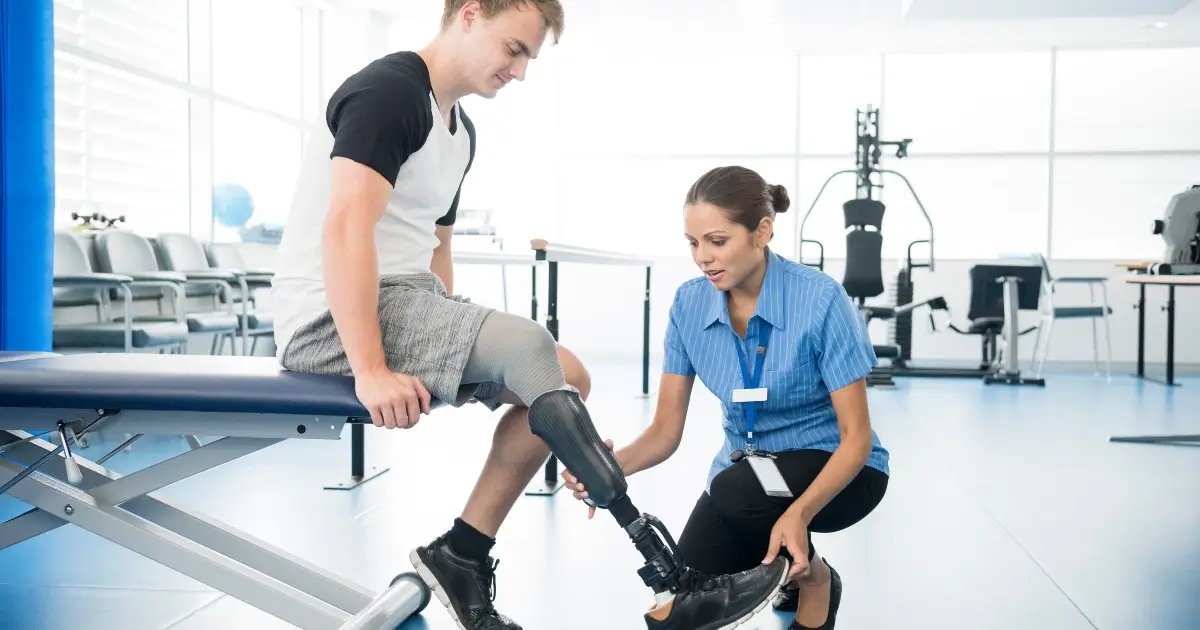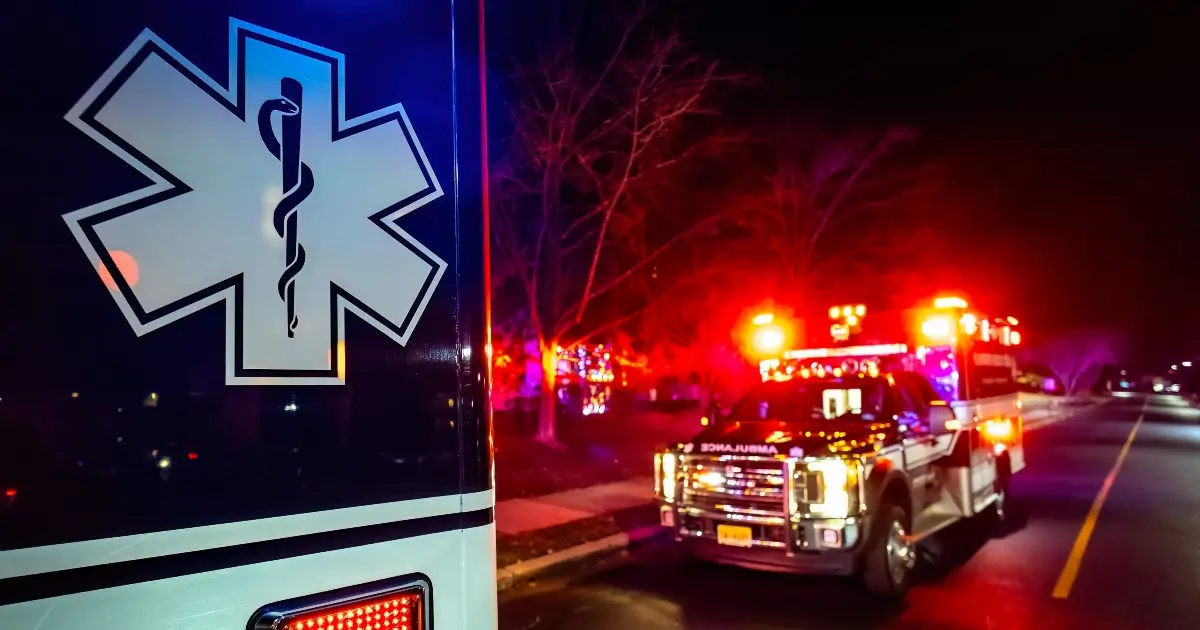
Distracted driving crashes are all too common in Minnesota, and they can turn your life upside down in seconds. Whether it’s someone scrolling through their phone on I-94 or taking a selfie on a side street, one careless moment can lead to devastating injuries. If you or someone you love was hurt by a distracted driver, it’s important to understand your legal options. At TSR Injury Law, we’ve helped countless Minnesotans hold negligent drivers accountable—and we’re here to do the same for you.
Distracted driving causes thousands of preventable crashes in Minnesota and across the country each year. When drivers take their attention off the road, even for seconds, the consequences are often devastating.
At TSR Injury Law, our knowledgeable Minneapolis car crash attorneys understand the challenges you face after being injured by a distracted driver. We welcome the opportunity to speak with you and learn more about you and how you were injured. In this free, no-risk consultation, we can answer your questions and clearly explain your legal options. We are skilled and fierce advocates for injured people, and we are ready to put that experience to work for you.
Call (612) TSR-TIME for a FREE Case Review today.
Distracted Driving Laws in Minnesota
Distracted driving is more than texting while operating a motor vehicle. It is engaging in any behavior that takes your eyes and mind off the road.
Minnesota’s Hands-Free Law
Minnesota’s hands-free cell phone use law prohibits drivers from reading, composing, or sending electronic messages while operating a motor vehicle. Under this law, drivers are prohibited from:
- Holding your cell phone while driving, even if you are using voice commands to operate it
- Sending or reading emails and text messages
- Taking videos or selfies while driving
- Using any other electronic communications
Since August 2019, Minnesota drivers legally cannot hold their phones while operating a vehicle. Drivers must use voice commands or single-touch activation for calls and navigation.
Teen Driver Restrictions
Drivers under 18 with provisional licenses face additional restrictions, prohibiting all cell phone use while driving, even in hands-free mode. These stricter rules recognize the increased crash risk for inexperienced drivers.
According to Minnesota’s graduated licensing system, teen drivers also have passenger limitations and nighttime driving restrictions. Violations of these provisions create additional evidence of negligence when teen drivers cause distracted driving crashes.
What Penalties Do Minnesota Drivers Face for Violating Distracted Driving Laws?
In Minnesota, even first-time offenders are not let off the hook. Distracted drivers who get caught face up to $100 in fines, and possible court fees.
Subsequent offenders face fines up to $300 plus court fees. Distracted drivers who cause crashes that severely injure or cause fatal harm to others may face additional penalties, including civil liability and felony criminal charges.
Why Distracted Driving Is Dangerous
Scientific studies have proven that the human brain cannot truly multitask while driving. Instead, it rapidly switches between tasks, creating moments where the driver is effectively blind to road conditions. Even a two-second distraction doubles your crash risk. A five-second distraction—like drivers who read a text message—when traveling at highway speeds, is like traveling the length of a football field without looking at the road.
What Are the Most Common Distracted Driving Behaviors?
Texting while driving remains one of the most common distractions on Minnesota roads, but there are many other activities that are equally dangerous and take a driver’s attention off the road.
When drivers engage in these behaviors, they significantly increase their risk of causing a crash and serious harm to others:
- Manual Distractions: Eating or drinking, adjusting radio controls, reaching for objects, applying makeup, or grooming. These activities take your hands off the steering wheel, which may not seem important. However, if you encounter an unexpected road hazard, like an object in the road or a swerving car, it reduces your control and increases your reaction time.
- Visual Distractions: Looking at navigation systems, watching or taking videos with your cell phone, or rubbernecking to look at crash scenes. Visual distractions, including looking at texts or emails, take a driver’s eyes off the road, creating a form of temporary blindness to current or developing traffic situations. A child or animal could dart into the road, or another vehicle may suddenly cut in front of you or slam on the brakes. Another danger of taking your eyes off the road is that it could cause you to drift into another lane of traffic.
- Cognitive Distractions: This type of distraction is one that often gets overlooked. However, talking with passengers, daydreaming, driving while upset or stressed, or driving while fatigued are all common distractions that take your mind off driving. Mental distractions slow reaction times and reduce a driver’s ability to notice important visual cues, like a swerving driver, even when their eyes remain on the road.
- Electronic Distractions: Programming navigation systems, scrolling social media, taking photos, or watching videos are all types of electronic distractions. Electronic distractions of any kind are particularly dangerous because they often combine manual, visual, and cognitive distractions simultaneously.
- External Distractions: Focusing on roadside activities, billboards, or other events outside the vehicle. These distractions draw a driver’s attention away from the road ahead where emerging hazards require immediate response.
When a driver who engaged in any of these activities causes a crash, collecting evidence of the specific distraction strengthens your injury claim.
How Can I Prepare to Avoid Distractions Before Driving?
Defensive driving techniques significantly help prevent car crashes, including those caused by distracted driving. You can also take specific preventative measures before starting your journey to further reduce your crash risk.
Here are some key steps that can help you to avoid a distracted driving crash:
- Make Adjustments and Set Up Electronic Before You Leave: Before driving, take five minutes to set up your GPS destination, select your music playlist, and adjust your mirrors and seat position. These preparations eliminate the need for adjustments while driving.
- Secure Loose Items: Make sure any groceries, work bags, purses or other loose items in your vehicle are secured before setting off. You may have to stop suddenly to avoid hitting another vehicle, pedestrian or object in the road. If you slam on your brakes or turn, you do not want to get distracted by items shifting around in your vehicle.
- Secure Your Phone: Place your phone in a secure location before taking off and set it to Do Not Disturb If you must make a call, use hands-free technology. Many phones now offer driving modes that automatically silence notifications while in motion. Consider installing specialized apps that block notifications while driving and send automatic replies to incoming messages.
- Secure Children and Pets: If traveling with children or pets, ensure they are properly secured with appropriate restraints before departure. When possible, have another adult in the vehicle to tend to any problems that arise. If you must tend to a child while driving, you should first pull off the road to a safe location – away from passing traffic.
- Break Frequently During Long Road Trips: If you are traveling a longer distance, be sure to plan regular breaks. Long commutes can cause road fatigue, magnifying the impact of other distractions. Even brief stops help refresh your attention and reduce your crash risk.
- Avoid Talking During Challenging Driving Conditions: Even with the convenience and added safety of hands-free technology, conversations are a cognitive distraction. During especially challenging driving conditions, like heavy traffic or poor weather, consider limiting all conversation, to help you maintain maximum focus on the road.
How Do Minneapolis Car Crash Attorneys Prove Distracted Driving?
If you are injured in a crash caused by a distracted driver, you may be eligible to seek compensation for your medical costs, lost wages, and other damages. However, as the victim, legally known as the plaintiff in a civil liability case, you must be able to prove the other driver was negligent.
Proving distracted driving is not easy. You must be able to demonstrate specific legal elements to have a case.
At TSR, we establish these key elements of negligence to develop a strong case when a distracted driver causes you harm.
Establishing Duty of Care
All Minnesota drivers have a legal obligation to operate their vehicles safely and attentively. This duty includes following traffic laws, maintaining control of their vehicles, and keeping their attention focused on driving at all times.
Minnesota courts have consistently upheld this duty of care in distracted driving cases. The standard requires drivers to maintain the level of attention that a reasonable person would under similar circumstances. This legal framework allows us to establish clear expectations for driver behavior.
Demonstrating Causation
When we represent you, we work diligently to establish a direct link between the at-fault driver’s distracted behavior and the crash that injured you. We show how that distraction directly caused or substantially contributed to the collision.
Establishing this link may require consulting with an accident reconstruction specialist to investigate the evidence and recreate the crash. Accident reconstructionists utilize their special knowledge, skills, and technical tools to determine what the distraction was, and how it impacted the driver’s actions leading up to the crash.
Documenting Tangible Damages From the Crash
The final element in establishing a valid injury case is determining whether there were any damages, like medical costs or property damage.
To ensure you recover full and fair compensation for damages resulting from the crash, it is important to accurately document the following:
- All medical costs related to the crash
- Physical pain and suffering
- Emotional trauma
- Property damage
- Lost wages
- And other losses
At TSR Injury Law, we guide our clients on to document their current injuries. We also assess and determine their future medical needs and long-term impacts. We calculate both the economic damages (medical bills, lost income) and non-economic damages (pain, suffering, emotional trauma) to ensure your compensation reflects the true cost of your injuries.
Why Contact an Experienced Car Crash Lawyer Sooner Than Later
Proving negligence of distracted driving requires specific evidence, including what may have been distracting the at-fault driver, such as:
- Footage from Minnesota’s Public Safety Cameras, for instance, gets overwritten every 7-14 days to make space for new recordings.
- Crash Debris and other physical evidence gets cleared away quickly to make room for traffic
- Witnesses, who have no personal investment in your case, soon forget key details
Contacting an attorney soon after your crash helps to ensure much of this evidence is preserved.
When TSR Injury Law takes your case, we work quickly to gather existing surveillance videos, vet witness statements and investigate the crash scene to build a strong and compelling case on your behalf.
What Evidence May Prove the At-Fault Driver Was Distracted?
Unlike other driving violations that might leave obvious physical traces, distraction often occurs invisibly inside the vehicle moments before impact.
It is important to collect evidence showing the at fault driver diverted their attention from the road, creating a dangerous situation that directly led to your injuries.
A successful case transforms seemingly routine elements, like phone records or surveillance footage, into powerful legal tools that can significantly strengthen your claim for compensation.
- Cell Phone Records: Our legal team will examine data to search for calls, texts, or app usage that occurred at the time of the crash. These records can be obtained through formal discovery processes and provide precise time-stamped evidence of phone activity.
- Witness Statements: Observations from other drivers or pedestrians who saw the driver using a phone or engaging in distracting activities. Witnesses might have noticed the driver looking down, holding a phone, eating, looking into the back seat, or otherwise not focusing on driving before the collision.
- Police Reports: Official documentation may include officer observations about potential distraction. For instance, officers may document statements made by witnesses at the scene. They may personally observe physical evidence like food, makeup, or electronic devices in the front seat of the vehicle.
- Video Footage: Traffic cameras, dashcams, or security cameras that captured the driver’s actions. When available, these visual records provide hard-to-dispute evidence of distraction before and during the crash.
- Vehicle Data: Information from the other vehicle’s event data recorder (black box) shows speed, braking patterns, and other data that may support your case. Sudden or delayed braking may indicate a driver who was not paying attention to developing traffic conditions.
- Social Media Activity: Posts or updates drivers made at or near the time of the crash may also support a claim. Some drivers inadvertently document their distracted behavior by posting, streaming, or updating social media while driving.
- Admission of Distraction: Sometimes drivers may make statements to police, witnesses, or insurance adjusters immediately after a crash, before considering the legal implications, providing powerful evidence.
- Physical Evidence: Items in the vehicle, like spilled food, open makeup containers, or unsecured pets, may indicate the driver was engaged in distracting activities.
How the Minnesota Hands-Free Law Impacts Your Claim
The Minnesota Hands-Free Law strengthens distracted driving injury claims because it has established a clear legal standard for acceptable phone use while driving. Drivers who violate this law by holding their phones create a presumption of negligence that supports your injury claim.
Cell phone records showing handset use during the crash provide further evidence of this negligence, along with any traffic citations assessed against that driver.
The hands-free law also simplifies jury instructions in distracted driving cases. Rather than debating what constitutes reasonable attention, jurors can focus on the clear violation of a specific safety statute designed to prevent exactly these types of crashes.
Common Defense Tactics At-Fault Drivers May Try and How We Dispute Them
Attorneys for defendants in distracted driving cases often employ specific strategies to avoid liability, such as by trying to shift blame or minimize their client’s responsibility for the crash.
Here are some of the most common defense tactics:
- Claiming Shared Fault: They may argue you were partially responsible for the crash. We counter with evidence showing their client’s distraction was the primary cause. We investigate thoroughly to document how the distracted driver’s actions directly led to the collision, regardless of other factors.
- Denying Phone Use: Defendants often claim they were not using their device, but we obtain relevant cell phone records and witness testimony to prove otherwise. Through formal discovery, we can access detailed phone activity logs that reveal the exact timing of any calls, texts, and app usage.
- Claiming Emergency Use: Some defendants may argue they were using their phone for an emergency call. We investigate to verify whether a genuine emergency existed. Minnesota law does allow using a cell phone in an emergency under limited circumstances. However, this exception is narrow and requires proof of an actual emergency.
- Challenging Evidence: Defense attorneys may question how evidence was obtained. At TSR Injury law, we take great care to ensure all evidence is properly collected and authenticated. Our legal team works with digital forensics specialists when necessary to establish the reliability of electronic evidence.
- Minimizing Injury Severity: The attorney for the defendant may try to downplay your injuries. We dispute this by working with medical experts to document the full extent of your injuries and their impact on your life. This includes gathering your relevant medical records, testimony from medical experts, and evidence of how your injuries affect your daily activities.
- Arguing Pre-Existing Conditions: Defendants may claim your injuries existed before the crash. We obtain comprehensive medical history and expert testimony to differentiate between pre-existing conditions and new injuries or aggravated conditions that were caused by the crash.
- Delaying Tactics: Insurance companies often try to delay claims, hoping victims will settle for less. We maintain constant pressure through court filings and negotiations to keep your case moving forward efficiently.
Why Hire TSR Injury Law to Manage Your Injury Claim After a Distracted Driving Crash
TSR Injury Law brings significant experience to your case; we have been representing victims injured in Minneapolis car crashes for decades. Our attorneys understand the specific challenges of distracted driving cases and how to overcome them. We have established relationships with accident reconstruction specialists, medical professionals, and other experts who can help to strengthen your case.
Our attorneys investigate thoroughly, collecting all available evidence before it disappears. We deploy teams quickly to document crash scenes, interview witnesses, and secure video footage before it can be deleted or recorded over. This rapid response often captures critical evidence that might otherwise be lost forever.
We handle all communications with insurance companies, preventing them from using your statements against you. Insurance adjusters are trained to elicit statements that can damage your claim. When you work with TSR Injury Law, we shield you from these tactics while advocating aggressively for your interests.
Most importantly, we fight for maximum compensation that reflects the true cost of your injuries, not just what insurance companies initially offer. This includes not only current medical expenses but also future medical needs, lost earning capacity, and compensation for pain and suffering.
Our track record speaks for itself. We have secured millions in compensation for car crash victims throughout Minnesota, including those injured by distracted drivers. While past results cannot guarantee future outcomes, our experience provides the foundation for building strong cases for each client we represent.
Need Legal Help After a Distracted Driving Crash? Call TSR Injury Law Today
When you are injured by a distracted driver in Minnesota, you need an attorney who understands the unique challenges these cases present. TSR Injury Law has the experience, resources, and determination to hold distracted drivers accountable for the harm they cause.
You pay no upfront costs when working with TSR Injury Law. We operate on a contingency fee basis, meaning we only get paid when you receive compensation.
Call (612) TSR-TIME today. Let us help you secure the justice and compensation you deserve.




